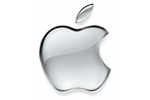Apple dictated Light Peak creation to Intel
2009-09-28 16:41
 Remember how Intel showed off its new, advanced optical standard -- Light Peak -- this past week on a Hackintosh? Well it turns out there's more to that story than you probably know, and it all leads back to some revealing facts about the connection... literally and figuratively. Engadget has learned -- thanks to an extremely reliable source -- that not only is Apple complicit in the development of Light Peak, but the company actually brought the concept to Intel and asked them to create it. More to the point, the new standard will play a hugely important role in upcoming products from Cupertino.
Remember how Intel showed off its new, advanced optical standard -- Light Peak -- this past week on a Hackintosh? Well it turns out there's more to that story than you probably know, and it all leads back to some revealing facts about the connection... literally and figuratively. Engadget has learned -- thanks to an extremely reliable source -- that not only is Apple complicit in the development of Light Peak, but the company actually brought the concept to Intel and asked them to create it. More to the point, the new standard will play a hugely important role in upcoming products from Cupertino.According to documents we've seen and conversations we've had, Apple had reached out to Intel as early as 2007 with plans for an interoperable standard which could handle massive amounts of data and "replace the multitudinous connector types with a single connector (FireWire, USB, Display interface)." From what we've learned, the initial conversations (and apparent disagreements) were had directly between Steve Jobs and Paul Otellini.
If you were wondering about that Apple-blue motherboard we saw at IDF or the aforementioned Hackintosh demo, this should explain everything. Cupertino apparently had specific demands for the standard, including the desire for a single port solution, and an insistence that optical was the only logical choice for such a connector type. Based on the documents we had a look at, the short-term plans seem to involve a one-size-fits-all solution (somehow allowing for multiple connections but avoiding "double dongles") which would enable users to connect a variety of devices into a single Light Peak port, while slightly longer-term plans will mean Light Peak obviates the need for almost every type of connector you use today. Translation: Apple products in the near future could come equipped with only a Light Peak port (or ports) to handle your networking, display driving, and general connectivity.
What happens next, however, is where the story really gets interesting. Based on what we've learned, Apple will introduce the new standard for its systems around Fall 2010 in a line of Macs destined for back-to-school shoppers -- a follow-up to the "Spotlight turns to notebooks" event, perhaps. Following the initial launch, there are plans to roll out a low-power variation in 2011, which could lead to more widespread adoption in handhelds and cellphones. The plans from October 2007 show a roadmap that includes Light Peak being introduced to the iPhone / iPod platform to serve as a gateway for multimedia and networking outputs. While the timing doesn't line up, a low-powered Light Peak sounds like the kind of technology that would be perfect for a device with a need for broad connectivity but limited real estate for ports... like a tablet.
Apparently, there are also plans for a new, low-power Atom chip due next year meant to compete with current CPUs driving mobile devices like the iPhone, netbooks, and set-top boxes. The indication we've been given is that that product (coupled with the Light Peak standard) could provide the basis for some "big" MID news in 2010... but not from Apple. As we saw at the announcement, Sony is also a first-tier partner (though not nearly in the connected way Apple is), and it looks likely the company could find use for that pairing (especially with its entry into the netbook market this year). We can't see Apple utilizing an Atom chip in anything, especially when it's busy cranking away with P.A. Semiconductor and its rumored projects.
In the end, we can't say we know or understand Apple's complete plans for the standard, but what is notable is that the company is pushing for an all-on-one connectivity solution, and pushing hard. That means Cupertino is at least prepared to abandon the standards we now know for a singular solution, and potentially just skip over forthcoming offerings like USB 3.0 (or at least downplay their use). It's not an uncommon move for Apple, but in the past those choices have had major repercussions -- and this pairing is extremely reminiscent of the USB / iMac story (Intel also created that standard, which Apple then popularized). We're going to keep our ears to the ground on this news, but for now, it's an interesting peek behind the curtain, and a possible glimpse into the future of connectivity.
0 comments:
Post a Comment